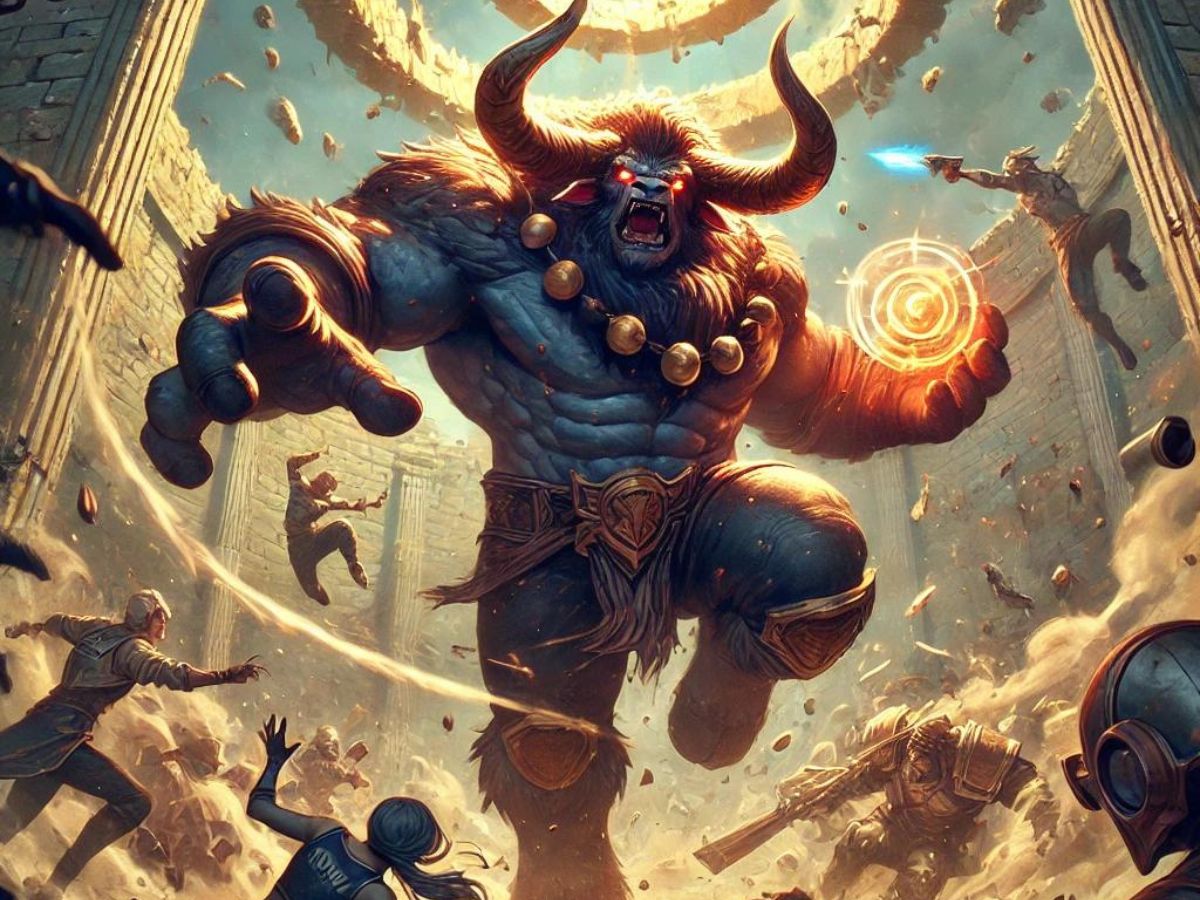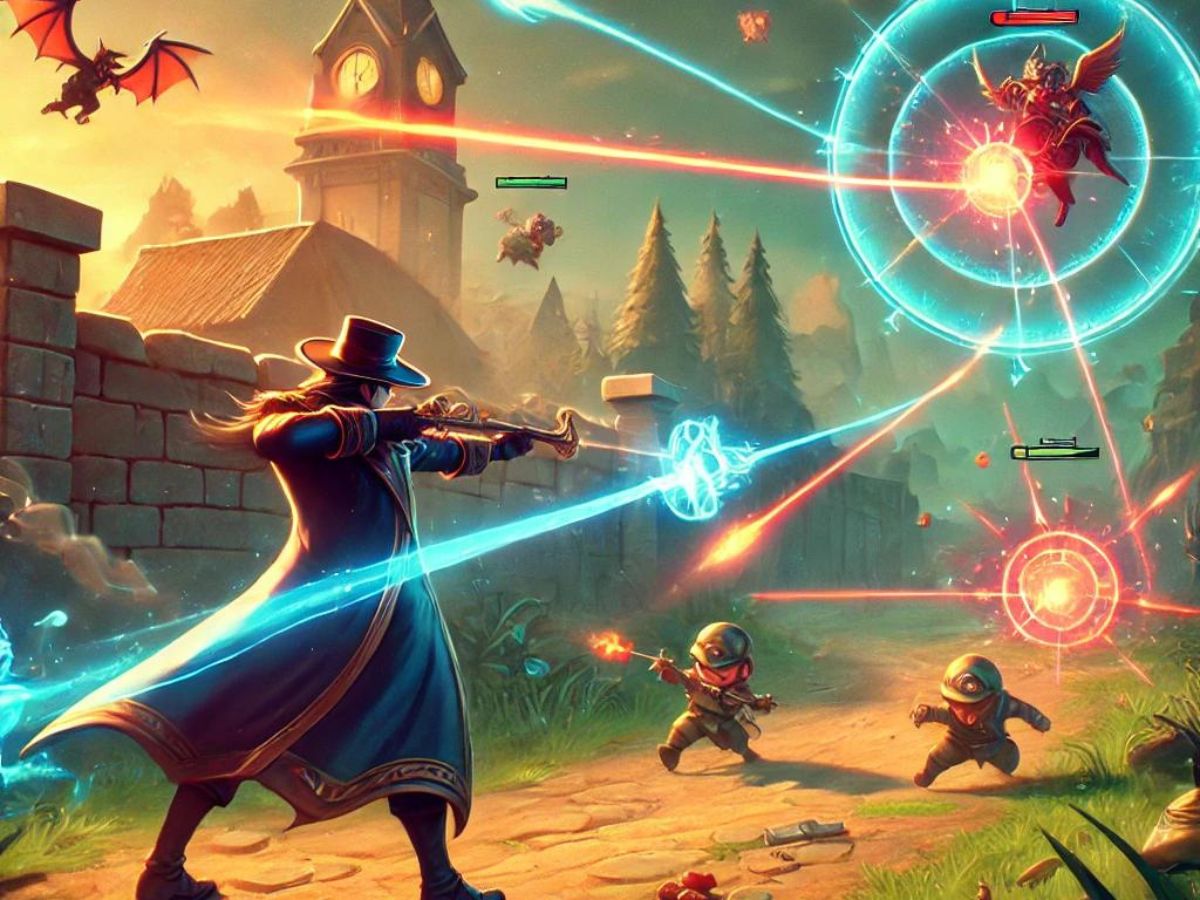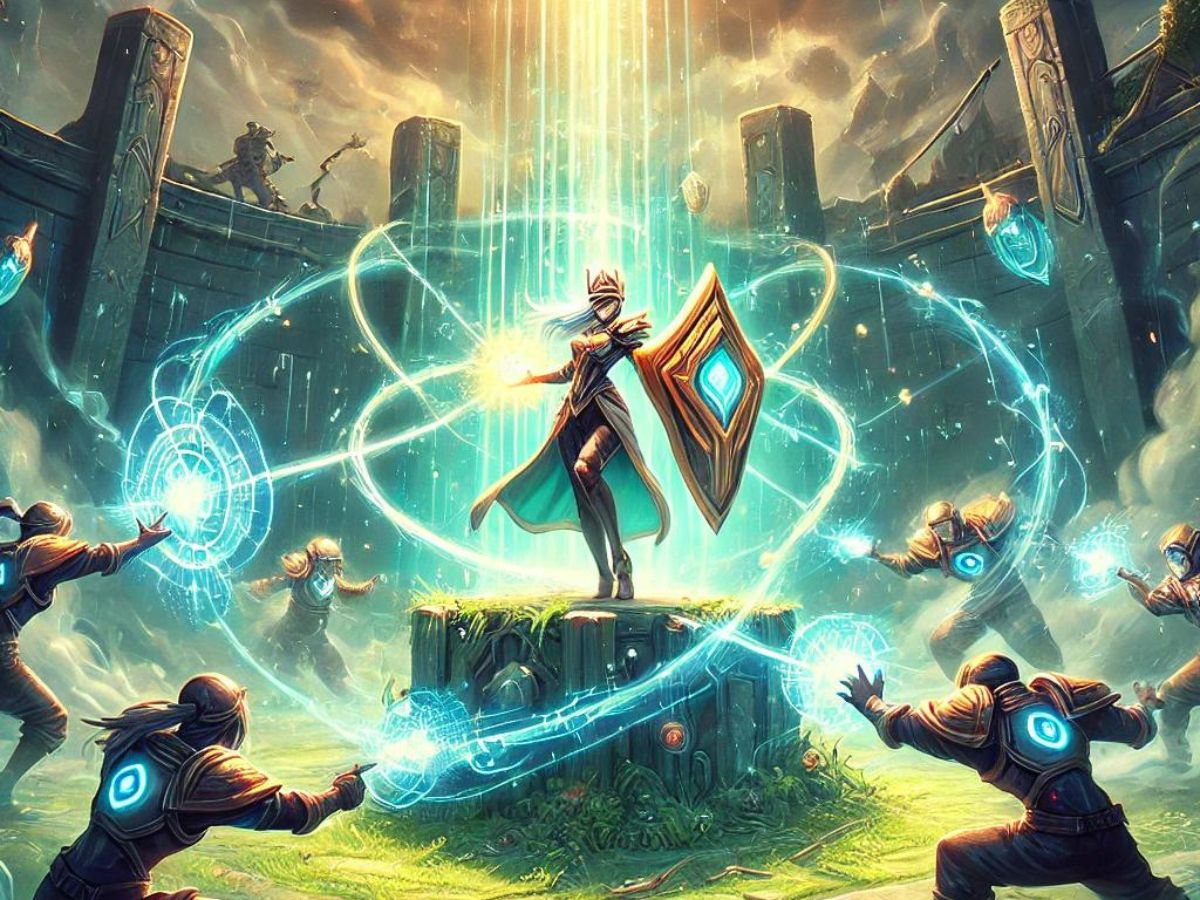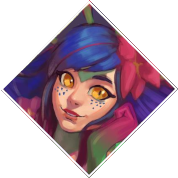
League of Legends, as a complex and strategically deep game, revolves around understanding various concepts that can significantly impact your gameplay. Among these, the triangle of poke, engage, and sustain is a fundamental dynamic that dictates the flow of many laning phases and team fights. Each of these elements represents a different strategy that champions can utilize to gain an advantage over their opponents. Understanding how these mechanics interact with one another is crucial for improving your gameplay, especially when it comes to mastering laning and skirmishing.
Before delving into the interactions between poke, engage, and sustain, it’s important to define what each term means in the context of League of Legends.
This refers to the ability to deal damage to an enemy from a distance, usually in small increments over time. Poke champions are typically ranged characters who can harass opponents without needing to fully commit to a fight. Examples of poke abilities include Ziggs Q, Jayce EQ, or Ezreal WQ. Poke is all about wearing down opponents gradually, forcing them in a situation where they're no longer healthy enough to commit to a fight, have to recall, or otherwise have to use resources like a summoner spell (in the case of poking somebody out of lane and forcing them to recall and Teleport back to catch a wave), potions or mana.

Engaging refers to initiating fights with CC and being able to follow that engage up with damage, or setting yourself up in a position to deal high DPS. Engage champions or abilities typically involve hard crowd control, such as stuns or knock-ups, and often force the target into a bad position, such as right next to an angry Nautilus or away from their allies. Examples include Rell's W, Leona's EQ, or Nautilus Q. Engages are also used as a way to punish an opponent overextending or taking CS, or to force an unfavorable fight at a bad time, such as when a splitpusher is doing a really deep push or when the enemy team is responding to something else.
Sustain refers to a champion's ability to recover health or resources over time without returning to base; essentially their ability to draw out a fight to their benefit through healing or shielding. Sustain champions can endure long fights or laning phases by healing themselves or their allies, being able to take more risks than their peers since they can just regain the lost HP if they get punished. A classic example of a sustain-heavy lane is Warwick, who aims to constantly trade no matter the cost, since his passive easily allows him to get back to 50-60% HP while hitting minions. Another sustain-heavy pick is Soraka, who can allow an ADC with a weak early game to overextend for farm, fully knowing that they can get the lost HP back if they are punished for it. In the later stages of the game, this can manifest in champions like Sona, Bard or Trundle, who find it easy to weave and bob in and out of a fight with their sustain, essentially being able to draw the fight out until they run out of mana or until somebody bursts them down without giving them time to heal up.
These three elements form a strategic triangle, where each one counters or is countered by the others in various ways.
The interaction between poke, engage, and sustain forms a rock-paper-scissors dynamic where each element has strengths and weaknesses relative to the others. Understanding this interaction is crucial for drafting compositions, winning laning phases, and securing objectives.
Poke champions are typically designed to whittle down their opponents' health bars before committing to a fight or forcing them to back off entirely. The strength of poke lies in its ability to apply consistent pressure from a distance, making it difficult for opponents to engage directly or farm safely.
However, sustain can mitigate the effectiveness of poke. Champions with sustain abilities can heal back the damage taken from poke, making it harder for the poke champion to gain a meaningful advantage. For example, a Soraka paired with a Jhin in the bot lane can counter the poke from an Ezreal and Zyra duo. Soraka's heals can offset the chip damage, allowing her ADC to continue farming safely. This forces Ezreal's wincon to instead focus more on scaling, while Zyra needs to focus more on facilitating all-ins and ganks from her jungler rather than poking down using her long range QW combo. It's even likely for Zyra to grab Dark Harvest instead of her usual Arcane Comet to focus on scaling along with Ezreal rather than poking down her opponents.
In this matchup, the poke champions must be mindful of the sustain capabilities of their opponents. If the sustain is too strong, poke alone might not be enough to force the enemy out of lane. This can lead to a situation where the poke champion’s primary strength is neutralized, requiring them to either out-poke the sustain (which can be difficult and mana-intensive), wait for the sustain champion to run out of resources, or wait for a roam from midlane or a gank from the jungler to be able to burst down Jhin.
While sustain can effectively counter poke, it is more vulnerable to engage. Sustain champions, especially enchanters, often lack mobility or hard crowd control, making them susceptible to being caught out by a strong engage. For example, while Soraka can heal back a Zyra's poke, she is very vulnerable to hard engage from a champion like Leona. If Leona patiently waits for a good engage without using her resources up, she can eventually hard engage on the enemy ADC and burst them down. If Leona can't kill them, she at the very least taxed quite a few resources from the enemy botlane. Soraka is forced to use her W without her Q buff to get her ADC healthy enough to stay in lane, but this forces Soraka to use up her HP and maybe even recall. Since Soraka wasn't able to heal small amounts of health throughout the entire lane long-term, she's forced to spend her mana on her Q instead to try and whittle Leona down to a point where she isn't able to safely engage anymore. This forces Soraka into a different wincon than she's designed to.
Engage champions can force sustain champions into unfavorable situations where their healing abilities are less effective. If a sustain-based laner is engaged upon and burst down before they can react, their ability to sustain in the fight becomes irrelevant. On the flip side, sustain champions can counter engage to some extent by healing up their allies after an initial engage. If the engage is not lethal and the sustain champion can recover enough health for their team, they can turn the tide of the fight. This creates a push-and-pull dynamic where the engaging lane needs to know their damage well enough to know if a fight will be worth it, and the sustain-heavy lane needs to know if they have enough healing to turn around and keep the fight going.

Poke lanes are generally more effective against engage-heavy lanes. Since poking is usually safer and less resource-intensive than a full-on trade or engage, poke champions have the time they need to be able to poke an engage-heavy lane to a point where they could no longer survive a fight, if they were to commit to one. What's more, poke-heavy champions like Jayce, Gangplank, Ziggs or Xerath often have tools to get away from engages. They're not perfect "get out of jail free" cards, but it can buy them enough time in the fight to whittle even more health down.
As such, hard engage lanes and teamcomps have to either play far enough back to not get hit by poke, or engage so early that the opponent doesn't have a chance to whittle down their resources before the fight. This forces engage-heavy champions into a weirder playstyle where they need to play extremely passively while waiting for somebody to overextend, rather than be able to proactively look to create unfavourable fights with their CC. A poked-down Blitzcrank or Thresh simply doesn't have enough health to afford running around river looking for skirmishes with their jungler, or ganks in midlane.
This creates a dynamic where poke champions try to whittle down the engage champions before they can close the distance, while engage champions have to look for the right moment to commit without sacrificing too many resources before doing so.
The interplay between poke, engage, and sustain is particularly evident in the laning phase, where champions are often matched against each other in isolated 1v1 or 2v2 scenarios. The type of champion you’re facing in lane will often dictate your strategy and how you approach the lane.
In a lane dominated by poke, the goal is usually to chip away at the opponent’s health by harassing them without being retaliated against. For example, in a bot lane where Caitlyn and Zyra are up against Ashe and Braum, the former will try to poke down their opponents with Caitlyn’s range and Zyra’s plants. The key to winning a poke lane is to maintain pressure and keep the enemy laners low, severely curtailing their agency over the map compared to yours, and forcing them into sticky catch-22 situations, where they have to decide between giving up a huge wave headed for their tower, or getting it but potentially getting dived on since they're permanently on 25% HP. Braum won't be able to make any plays in this situation because his shield will always be on a higher cooldown and cost more resources than Cait and Zyra's poke.
However, poke lanes can be countered by sustain lanes. If Ashe is instead paired up with a support that can heal and shield her through the poke, like Nami or Sona, then Ashe won't be consistently low during the lane. Caitlyn and Zyra can't keep Ashe shoved in constantly, they need to give her space in hopes of landing a Zyra root and going all in, although this obviously gives Ashe more priority over dragon than she otherwise would have with a Braum.

In sustain lanes, the focus is more on long-term trades. For example, in midlane, a Vladimir will try to constantly outsustain a Xerath's poke, to the point where Xerath being able to safely poke from a safe distance will be irrelevant. If the Vladimir plays well, he'll never be low enough to be killed by Xerath. He's instead allowed to farm and scale unimpeded, eventually being able to roam and out-pace Xerath around the map. Xerath can't shove Vladimir under his tower and poke him further, and is instead forced to try and freeze in hopes he can burst Vladimir down with his jungler.
Sustain lanes are vulnerable to hard engage, as mentioned earlier. If Xerath does get a gank from, let's say, a Lee Sin, then Vladimir will be unable to outheal the damage. Even if Lee doesn't kill Vladimir, Xerath is now able to move up and threaten the lower HP% Vladimir, get him away from the creeps and slow his scaling down until Vladimir recalls, uses potions to stay in lane, or recalls and Teleports back to lane without giving up minions.
Engage lanes are all about having the capacity to punish risk-taking on demand. Champions in these lanes often look for a level advantage or a misstep from their opponent to secure a kill. For example, in a mid lane matchup between Zed and Orianna, Zed will look to engage on Orianna whenever he has his ultimate available, especially if Orianna has her Flash or ultimate down. Even if he doesn't actually engage, Orianna's forced to play in a way where an all-in from Zed wouldn't be worth it.
Engage lanes can be vulnerable to poke if the engage champion is unable to find an opening, however. Early on, Orianna's objective is to tax Zed's engage as much as she possibly can. Use her cheap poke to get the biggest level and health advantage she can. If she can keep her distance and play around her range, Zed should be low enough where it would simply be inting to engage on Orianna.
The poke/engage/sustain triangle also plays a role in team composition and strategy. When drafting a team, it’s important to consider how these elements will interact not only in lane but also in mid-game skirmishes and late-game team fights. The most common situation where these compositions will come up is during sieging. Sieging means sitting near an enemy turret, and trying to take it down while harassing the enemy team or engaging to get a better position.
Looking to enhance your gameplay with high-ranking accounts? Check out our ranked accounts, tailored to give you a competitive edge in every match.
A team that focuses on poke typically wants to siege objectives and force the enemy team to engage into them after taking significant damage. In a teamfight scenario where towers are involved, these are often called siege comps, although this is not necessarily correct. Every comp has tools at their disposal to siege with. A comp with a Sona's going to be very efficient at sustaining through poke, and a comp with a Rell and a followup for her CC will often engage on a heavy poke comp if they aren't able to be properly spaced out or poked down. Even champions that do not snugly fit either of the three roles will find themselves suddenly in one of them as soon as a siege starts. For example, Yorick's often seen splitpushing no matter what's going on in the rest of the map, but he can always join a siege to offer some poke with his E and R. In the same vein, a Fiora can also join a fight to look to riposte some CC and turn it into an engage with her QW or QW flash tech. It's important to remember these roles can be flexible, especially as more teammates and opponents join the fight.
Engage compositions excel at initiating fights on their terms and picking off targets before a fight even begins. Champions like Malphite, Leona, and Jarvan IV are key engage champions that can set up wombo combos or isolate high-priority targets. Even if they're unable to engage onto the full enemy team, they can often kill the enemy jungler and take an objective uncontested, or kill the enemy ADC before pushing into the enemy base. Engage compositions can struggle against poke-heavy teams, since a poke comp will often force an engage comp to engage prematurely to avoid a drawn-out fight they'd get helplessly poked out of. They are forced in an awkward situation where they have to take the first engage they can possibly get, or simply give up whatever objective they're fighting for. Engage comps also obviously can be countered simply with disengage tools, which are relatively evenly placed in the roster. Engage champions can also sometimes attempt to disengage with their own CC, or sometimes have abilities that are equally good for engaging as they are for disengaging (most prominently things like Thresh's E and R).
Sustain compositions are more focused on “stalling out” or outlasting the enemy team in prolonged engagements. It's quite rare to see a full, dedicated sustain comp, rather, it's more common to simply see a champion giving a comp quite a bit of sustain. Examples include Sona, Soraka, Nami, Maokai and Bard. These champions have the privilege of lessening the effect of, or outright nullifying, harass from poke comps. This can allow your team to outpoke the enemy out of pure attrition, or keep them healthy enough so that they're able to properly punish bad positioning in a fight without just dying for it. Sustain-heavy comps generally like to draw out fights and spend resources and mana in a slower, more methodical way, to enable carries to take risks in order to dish out damage without actually being punished too hard for it.
The interactions between poke, engage, and sustain aren’t static. They can change depending on the state of the game, itemization, and individual player decisions. Understanding when and how to adapt your strategy is crucial for leveraging the poke/engage/sustain triangle to your advantage.
Starting fresh or climbing in style? Browse our level 30+ unranked accounts for a clean slate and jump into competitive play with ease.
In the early game, laning phase matchups are often heavily defined by these archetypes. Resources are much rarer in this point of the game. Poking the enemy ADC into spending a potion can be pretty important at level 1 or 2, granting your duo a health advantage, while costing mana at the point where it's most valuable.. Understanding how to leverage poke or sustain to gain an early advantage can set the tone for the rest of the game.
For example, a Caitlyn player might focus on landing as many Qs as possible to push her opponent under tower early, leaving her low on mana and pushed up, more open to ganks. She is, however, at a better position to help her jungler if they choose to fight for scuttle. Meanwhile, a Sona player in the same lane might focus on keeping her ADC healthy and minimizing interactions.
As the game transitions into the mid game, team compositions start to take shape, and champions come online with their core items. This is often where engage becomes more prominent, as teams look to secure objectives like Dragon, Rift Herald, or towers, and burst becomes good enough that getting caught out by a Pyke Q or Leona E can cost you your Flash or a black-and-white ride back to base. Teams with strong engage will look to force fights around these objectives, while poke teams will try to chip away at their opponents before committing. Sustain-heavy supports and skirmishers will focus on dragging out fights, especially if these fights enable a splitpusher somewhere else to take a cheeky tower or two.
In the late game, the poke/engage/sustain dynamic often comes to a head. Team fights become more decisive, and the outcome of a single fight can determine the game. Poke champions will have built enough damage to threaten squishier targets with a single rotation, while sustain champions will have enough healing to get caught out while splitpushing, hit one or two camps and return to pushing at full health as if nothing happened. Engaging power still remains important, specially since a team that's able to wrap up a fight very quickly will have more time to plan what to do after an ace, or may have time to do several things back to back, like getting Baron right after Dragon.
The triangle of poke, engage, and sustain in League of Legends is a crucial concept that takes precedence at any point in the game. From laning phase dynamics to team composition and late-game strategy, understanding how these concepts interact with eachother can be incredibly helpful. You can pick up on ways to play against specific comps, what not to do against them, or how to best enable your team to carry out their wincon in a fight.
Each element has its strengths and weaknesses, and success often comes down to understanding when and how they can be leveraged in different phases of the game. The key is adaptability, and knowing that champions are always designed with at least more than one of these strengths in mind.
